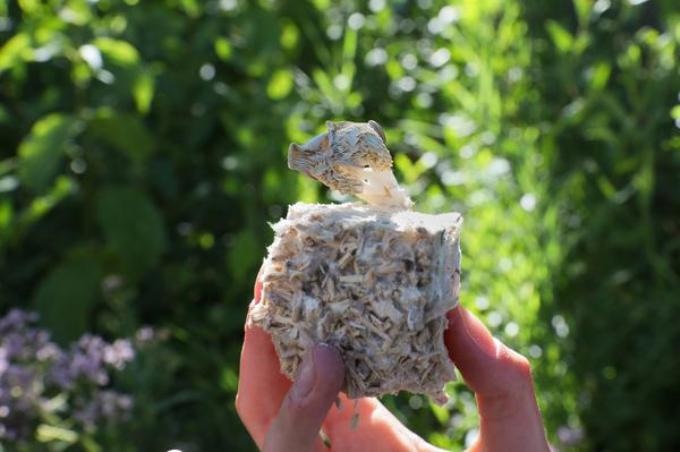Jul 10 2018
A technique for developing a biodegradable material from mycelium and sawdust has been discovered by a group of environmental engineering and architecture students from EPFL. The innovative material, developed with the help of their special formulation, has propitious characteristics and could serve as an alternative to plastic.
 (Image credit: EPFL)
(Image credit: EPFL)
Not only are the mycologists interested in the physical characteristics of mushrooms. At present, an expanding community of environmentally conscious users is closely analyzing mycelium, that is, the part of mushrooms that grows underground.
This thread-like substance has the ability to bind together different substrates (for example, woodchips), and it is possible to mold the ensuing mixture into things such as packing chips, bricks, furniture panels, and a variety of other objects. Eight students from ENAC have been analyzing the technique for using mycelium, which can be grown by individuals themselves, as a potential alternative to plastic.
This idea came up when we met with architecture students at our school to develop an original, innovative alternative to existing building materials, which generate a lot of pollution.
Gaël Packer, an environmental engineering student, ENAC
Motivated by a TED talk, he and his colleagues decided to offer their support to this path-breaking community with concerns about the future of our planet. As future construction engineers and architects, they understand that, due to resource depletion, some of the existing building materials will not prevail forever, and that existing materials produce a lot of emissions all through their life cycle, from production to disposal.
Promising Results
Mycelium-based materials are a promising replacement since they are not only light in weight, low-cost, and easy to produce, but they also offer a way to recycle waste products and are easily biodegraded within a period of three months. At present, several grow-it-yourself kits can be obtained online; all that is needed is mycelium, a substrate, and some patience (not included in the kit).
The first stage is the growth of the “mushroom roots” in a pasteurized or sterile environment along with the substrate and some flour and water. Subsequently, the ensuing mixture is poured into a mold. Upon being set (which needs about a week’s time), it has to be baked at a low temperature to arrest any further growth and to solidify the shape of the object. The result is a solid, lightweight, resistant, and low-density object, largely like it had been synthesized with the help of 3D printing.
Instead of using a grow-it-yourself kit, the researchers made their own version of the mixture using mycelium obtained from local oyster mushrooms and fibers from hemp grown in the Jura region. Subsequently, the students put their mushroom-derived material to test, armed with a healthy dose of scientific skepticism masked by optimism. "We worked with several EPFL labs to test the material’s key properties: thermal insulation, acoustic absorption, compressive strength, and water- and fire-resistance," stated Packer.
They discovered that it is watertight and floats, that its thermal insulation potential was comparable to that of other insulating materials, that it is quite fire-resistant, and that it had the ability to easily endure the weight of a human body. Acoustic absorption tests are ongoing.
A Recipe That can be Improved
“Although further testing is needed, the results so far are highly promising and show that the material’s properties are similar to those of expanded polystyrene. We can certainly improve those properties further by adjusting the composition of our mixture, whether in terms of the substrate or the mushroom feed,” stated Packer.
The success of this study was in part due to ENAC’s Student Kreativity and Innovation Laboratory (SKIL), an open-space workshop in which students can work on class projects and obtain technical and practical support and also assistance from teachers.
Série d'été 2018: mycélium